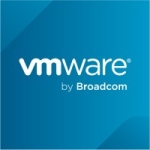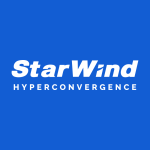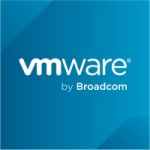What is our primary use case?
My primary use case is to deliver cloud services. This is for our cloud infrastructure. Nutanix is deployed on-premises, but I have six locations that I manage remotely, so it's like they're cloud-based.
How has it helped my organization?
Nutanix has improved my company because it's 100% stable and the simplicity of management is amazing. It's my favorite product. We set it up here in Israel, then remote technicians in Africa just plug in the cables, start it up, and everything is running.
What is most valuable?
One of the most valuable features is the One-Click Upgrade. When I need to update the system, I do it with one click. This product is amazing because everything is easy to manage, from network management to snapshots.
What needs improvement?
Nutanix needs to improve network features like Passthrough – SR-IOV. It could be improved by supporting SR-IOV, if they had that support, I would not have needed to implement the VMWare vSAN.
SR-IOV give the ability for a VM to use the physical NIC as its own NIC with all the network featuers on that NIC.
For how long have I used the solution?
I have been using this solution for five years.
What do I think about the stability of the solution?
This solution is very stable. I'm 100% satisfied with the stability.
For maintenance, one person is enough. If you're looking at an IT environment, the same person who does the Active Directory can manage Nutanix as well. You don't need to hire a person who specializes in Nutanix.
What do I think about the scalability of the solution?
The scalability of this solution is linear. We have already done two or three scales in two of our locations. We just send two nodes to each location, they connect it, we run Auto-discover, and boom, it's configured.
At my company, there are many people using our cloud products running on Nutanix. In Ghana there are more than 10,000 users; in Uganda, it's around 30,000 people; in Israel, it's about 200 people; but in London, there are around 20 million people using it. Because we provide cloud services to mobile network operators, each mobile network operator has millions of users and to manage the traffic, we use Nutanix.
Currently, we have five clusters, twenty-four nodes, and we have plans to increase next year.
How are customer service and support?
I have a direct phone number that I call and someone immediately answers—you can't get better support than this. I've never needed real support, only clarification on how to use it better. For example, we wanted to do an upgrade and we were on an old version in one of the clusters, so we contacted them for guidance. There were a few steps on the upgrade, so we asked to make sure we were doing it correctly. We got an immediate answer, ran the upgrade, and everything was okay. Their support is great.
How was the initial setup?
The initial setup is very simple. You turn on the servers, enter the IP configuration, and that's it. You're good to go. The whole deployment—fixing the cables, mounting the equipment under the rack, setting up the cluster—is simple and once the equipment is plugged in, it's up in 15 minutes.
What about the implementation team?
I implemented through an in-house team. I didn't need any external support. For deployment, I did it all by myself five years ago, but today there are two people to manage the full IT. These two people also run Nutanix.
What was our ROI?
I'm a telecom, so I don't see a direct ROI on the IT. I use Nutanix to run a product that brings me money, so the return on investment takes a few months. For example, I have to buy a server (VMware), pay out, I run some virtual machines to run the product, and from that income I calculate ROI. It's not regular IT, so you can't compare it with other scenarios.
What's my experience with pricing, setup cost, and licensing?
I purchase a license for this product every five years. At the beginning of our work, we purchased the Ultimate edition that included everything. Over the years, they developed some features that require licenses, like Nutanix Flow. But we keep purchasing our five-year license with all the features included.
Which other solutions did I evaluate?
I use VMware vSAN as well. I outsourced a team of five to help me configure the servers. I'm not sure if it's better or not because we just started the new cluster of VMware vSAN, but I needed to pay for their knowledge. One product that we are implementing requires the use of VMware. That one product is the reason why we implemented VMware.
What other advice do I have?
I would rate Nutanix Acropolis a ten out of ten. It's an amazing product. If you are looking into implementing Nutanix, I recommend going to their website (my.nutanix.com) and enjoying the information there.
Which deployment model are you using for this solution?
On-premises
Disclosure: My company does not have a business relationship with this vendor other than being a customer.

















